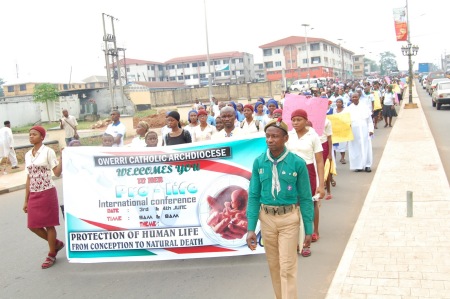It’s a familiar ritual. The media response to the latest UN population projections splits between casual interest and panic with a heaping side dish of policy recommendations.
To the alarmists, the prospect that population growth may stabilize after the year 2100 instead of before represents a call to action. At a press conference, UN official Thomas Gass said the world must ensure the “centrality of population issues in the post-2015 development agenda.” In policy terms, this means increasing the promotion of contraception, particularly in developing countries, most especially in Africa.
The new demographic projections, published in Science, employ modern statistical methods that incorporate historical data to narrow the range of uncertainty in their predictions.
This approach has critics. Demographer Nicholas Eberstadt points out that no statistical model can bypass the fact that “global fertility is a matter of human volition,” and notes that experts have difficulty explaining historical fertility patterns, much less anticipating future ones.
Eberstadt is far more confident in predicting that Malthusian population activists will seize on this report to reawaken concerns about global population levels – concerns that had diminished as global population growth slowed and previously-predicted population doomsday events failed to materialize.
In a piece tellingly titled “Don’t Panic,” the Economist lists articles registering alarm at the new numbers, then points out the projections essentially repeat what has been said many times before, only with better math.
“The population is levelling off and it’s going to eventually level off under any of these scenarios, whether that’s before 2100 or after,” commented renowned population expert David Lam.
At the UN, discussions of population inevitably turn from predictions to aspirations, with an implicit assumption that population growth is something to be avoided. Responding to Eberstadt, study co-author and UN Population Division head John Wilmoth concluded, “To achieve this lower [population] trajectory will require the right policies, namely better access to contraception and education in high-fertility countries.”
Wilmoth’s assumption that access to contraceptives is missing piece in high-fertility areas like sub-Saharan Africa is a common one, but it is not supported by the data: fewer than 2% of surveyed married women in that region cited lack of access as a reason for non-use of contraceptives.
The Science article defines “unmet need for contraception” as “the difference between the demand for contraception and its use.” This is a definition favoured by Population Council’s John Bongaarts, who writes, “married women who are fecund and do not wish to become pregnant soon are assumed to have a demand for contraception,” while noting that “some of these women are practicing contraception and some are not.” In fact, survey data repeatedly show that more women cite personal opposition to contraception than lack of access when explaining the cause of their “unmet need.”
“The Population Division has historically had a reputation of impartiality,” said Susan Yoshihara, C-Fam’s Director of Research and co-editor of the book Population Decline and the Remaking of Great Power Politics. “The last two directors, however, have not been shy about promoting their personal views on policy, namely that smaller families are better.”
The continent of Africa has remained puzzling to demographers who incorrectly assumed that better education for women and increased contraceptive access would drive down birth rates.
Recent UN events have promoted the idea that reducing family size in Africa will result in a “demographic dividend.” United Nations Population Fund head Babatunde Osotimehin admitted that large families are a part of African culture, but added, “culture is dynamic… what I do now is not what my father did.”
Urging increased emphasis on family planning, the Nigerian father of five said it is essential to “face the fact that [development] is going to be impossible if women bear six, seven, eight children.”
Rebecca Oas is Associate Director of Research at the Catholic Family & Human Rights Institute (C-FAM)












